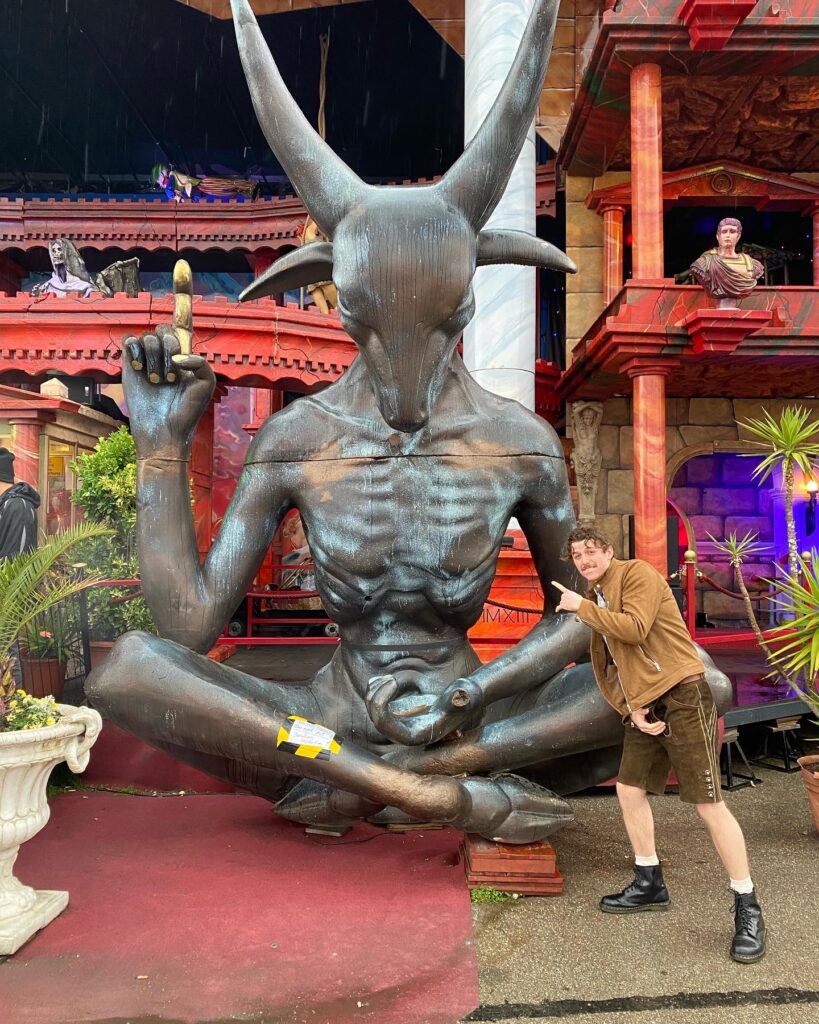
Servus! Oktoberfest ist hier!
For some, this is just another fest— something they have done innumerable times in their lives. For others, this is a bucket list item for which they have finally saved up enough. Or maybe the stars have finally aligned in such a way as to allow for them to make it this year.
Regardless, there are few more incredible, unique and exciting events across the globe than Oktoberfest. Held every year in Munich at Theresienwiese, this is one of the largest festivals in the world—lasting 16 days with over 500 vendors at fair grounds and routinely attracting over 6 million visitors to the Bavarian capital. It is the largest of its kind globally, drawing a significant international crowd who often stay for the entire duration of the festival.
1.8 million gallons of beer are consumed every year, beer that is specifically only brewed from the city of Munich and made to be even higher in ABV, typically tapping out around 6%.
For some, this might feel overwhelming. With 14 “big tents” owned by different breweries as well as an additional few dozens of small and medium sized tents, it is difficult to know where to start and how to maximize your time at the grounds.
Luckily, I became quite a pro at navigating festivals in Germany and these are some of my tips and tricks to help you make the most of your time.
Bring a jacket

Before even leaving for the festival, look up in the sky. See the sun and peaceful breeze? Understand that will probably be gone by noon, replaced by grey skies and rain. Every single day that I left for Munich, the morning started off beautifully but by nightfall, a cold rain and gusty wind was falling on me.
Germany in late September to October is very fickle and will turn into terrible, stormy weather without warning.
Have your route home planned beforehand
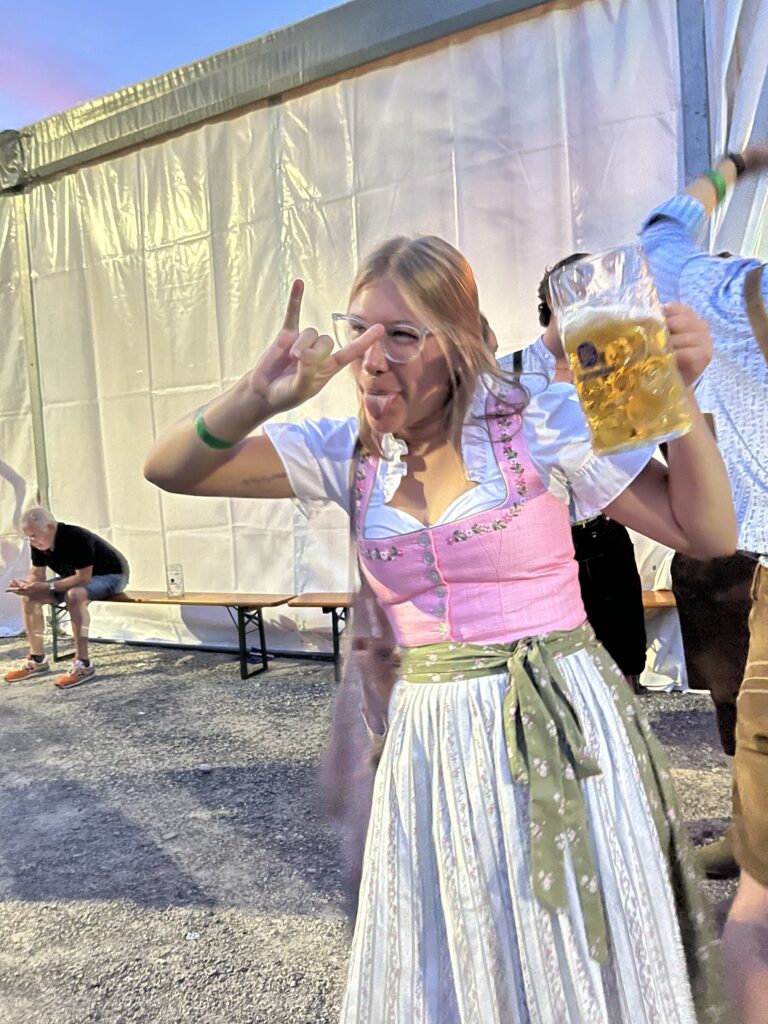
If you are here, you are going to be drinking. One beer will turn into several before you know it and, suddenly, you find yourself completely intoxicated. Keep yourself and your friends out of danger and know exactly how you are getting home before you arrive. Have the train ticket booked or the bus or taxi route understood and planned out. With such a large crowd inevitably comes those with ill-intent.
While this may seem alarmist, at the very least it will save yourself the trouble of being stranded at the Bahnhof for an entire night while all the hotels are sold out.
Pace yourself
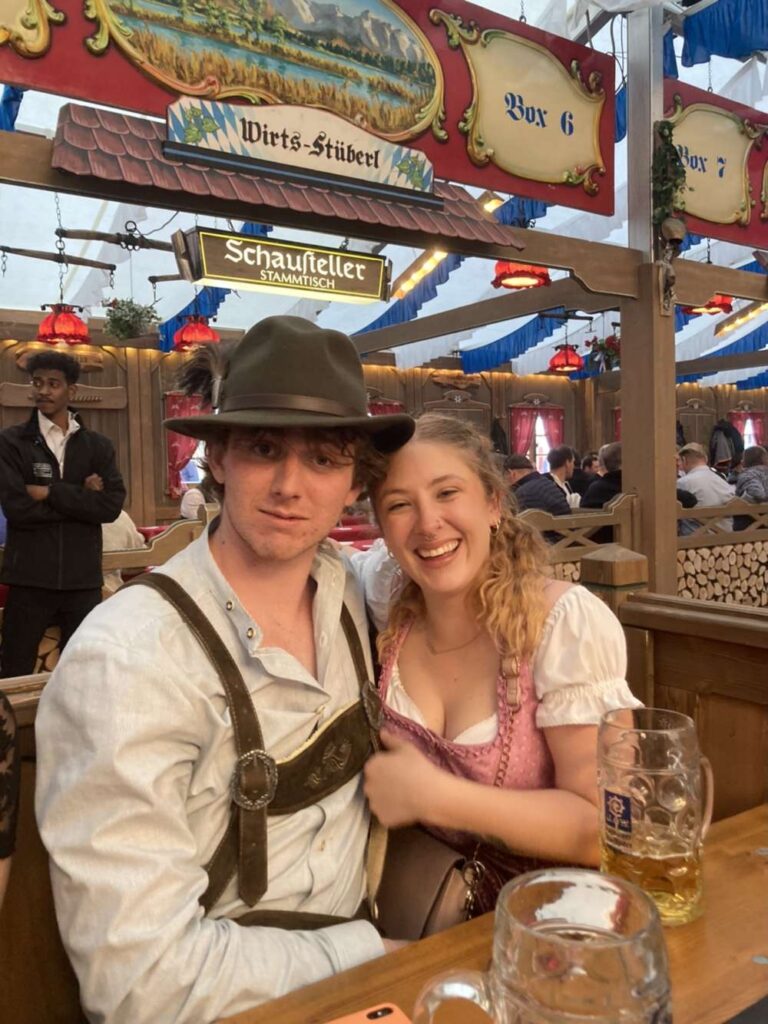
This is one that I wish I could follow but I don’t know how to take my own advice. The beer isn’t going anywhere. The parties in the tent last all night. You do not need to immediately get incredibly drunk the second you arrive.
Eat a good breakfast, explore the grounds a bit, hydrate with water and take the time to really be present. Oktoberfest is a dynamic event that is constantly changing and breathing— each day you might explore and find something you didn’t see the day before.
Arrive early
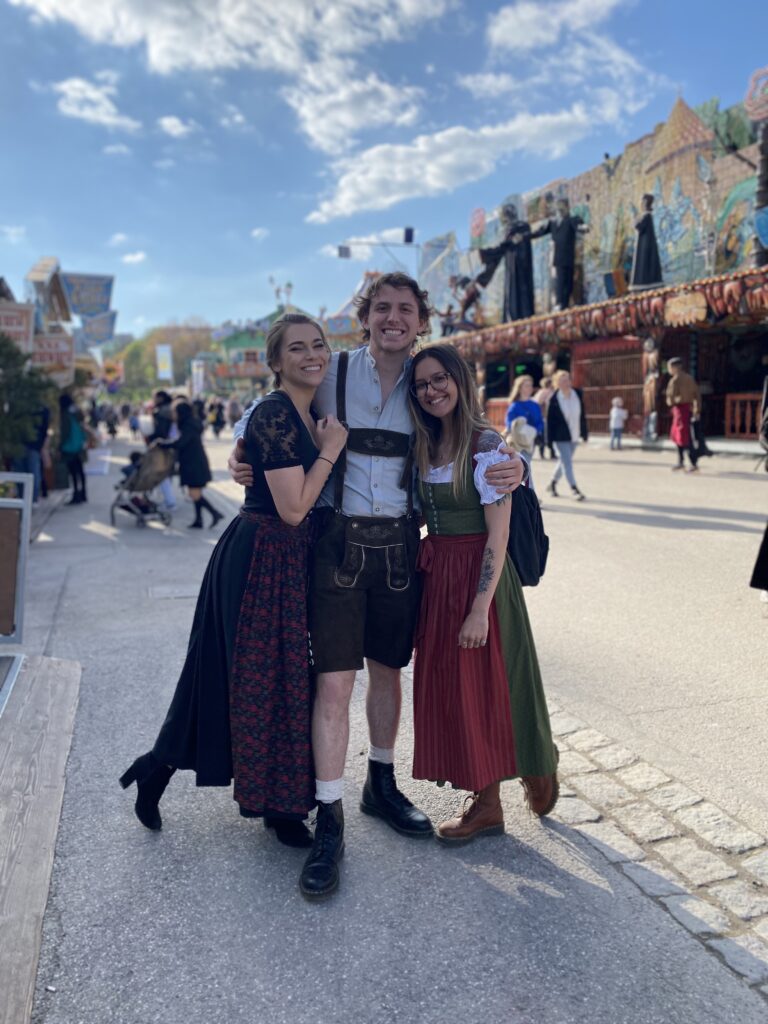
That said, still be sure to arrive early. Most of the patrons are typically hungover from the day previous and won’t arrive until midday or later. If you don’t feel like shelling out money to reserve tables, arrive early and plant yourself at the first available spot you see— especially if it’s near the band stage. I never once reserved a table and sometimes it came to bite me, but most times I arrived early enough or had enough friends scattered about the park to waltz in and find a seat without too much trouble.
Some of the larger tents are able to seat over 8,000 drinkers but even still, they will fill up quickly and get very rowdy. Before the evening festivities begin, make sure to have arrived early enough to guarantee yourself a spot.
Research the tents
Realistically, you won’t be able to visit every tent, even if you hit a new one every day or even every couple hours.
Look on local page threads and travel blogs to determine which spot is going to be more up your alley. Some tents are outrageously rowdy and are known as party tents, some are calmer and more peaceful.
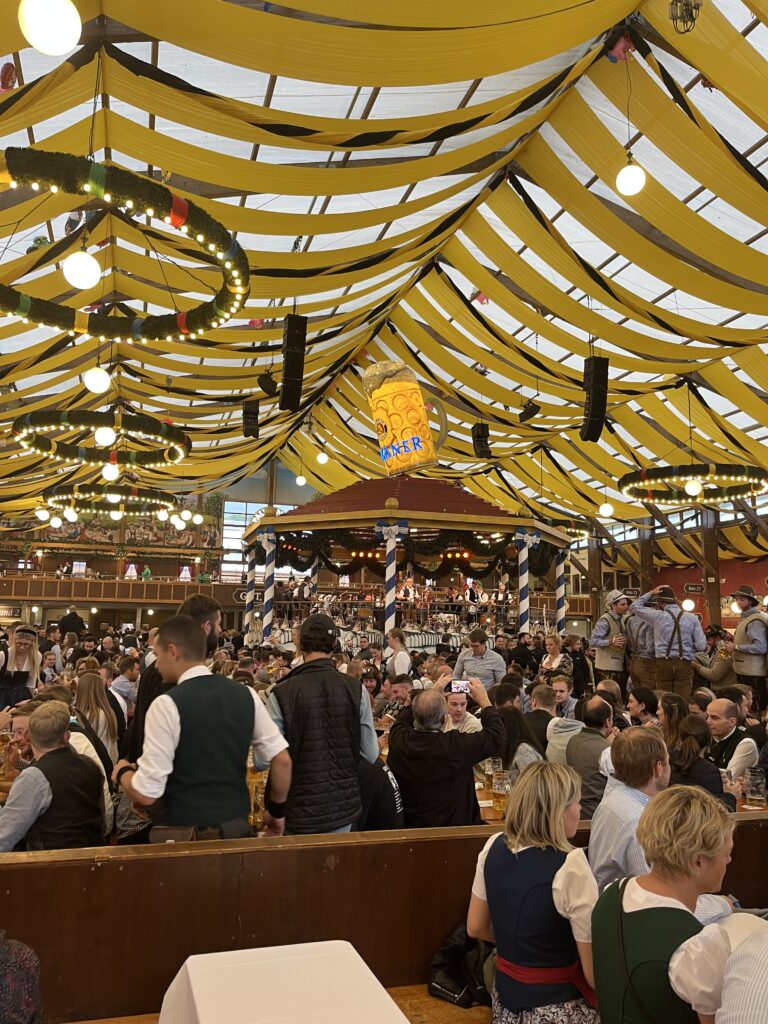
Beer prices are usually set by the Munich government, so luckily prices will be uniform across most of the area (this year it is from 14.50 to 15.80 Euros for a liter), but the taste and quality can still differ wildly.
The most well-known and largest tent is Hofbräu-Festhalle, which seats close to 11,000 people and takes over three months to assemble. This is the party tent and most visitors will flock here immediately due to the massive stage and standing area as well as the encouragement of heavy drinking and eating; each table will typically have a two-drink minimum. The world-famous Münchner Gschichten band plays all the way until 11:30 pm. I used to hear John Denver and Tom Petty songs played with impressive regularity here.
The beauty of Oktoberfest is in the diversity and variety of halls and tents; each known for something different and unique.
The Armbrustschützenzelt is home to the German Crossbow Championships. The Fischer-Vroni Festzelt is where fish-lovers can gather as the famed Steckerlfisch is roasted over open fires. Hacker-Festzelt is known as Bavarian Heaven due to the painted ceiling with blue skies and small, puffy white clouds streaking across.
All this to say, every tent has something different for you: have a game plan going into it so you know which one looks most interesting to you personally.
Choose the Rides Carefully
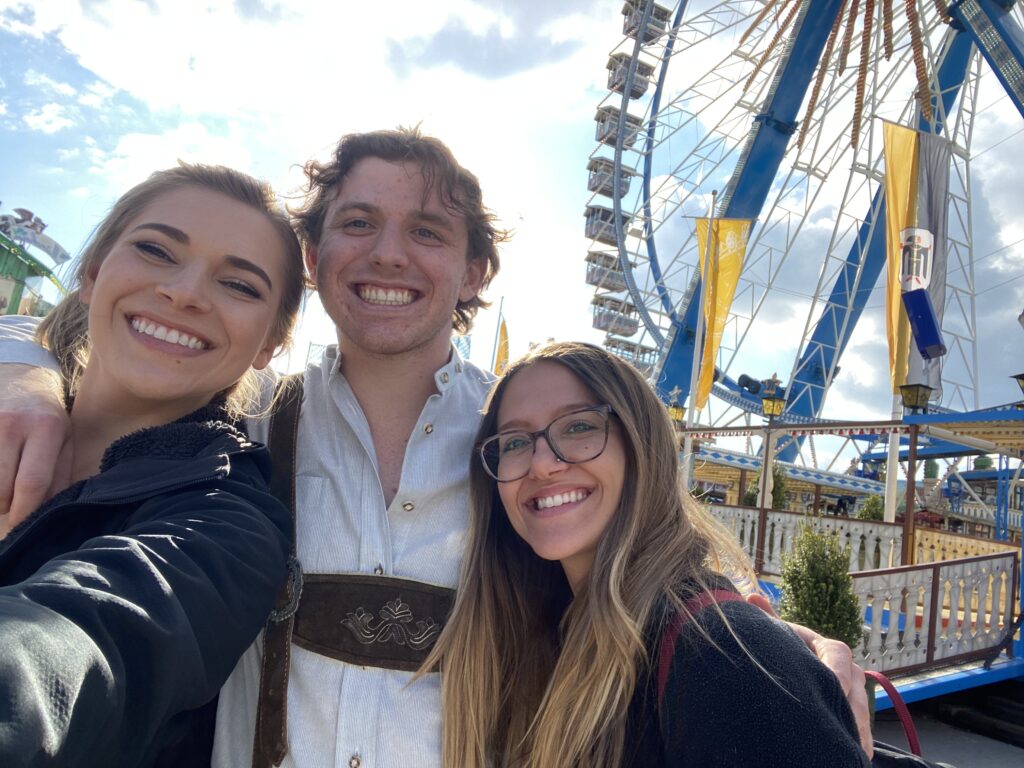
This isn’t to say don’t ride any rides, but as someone who came to Oktoberfest with a strict budget, rides seemed to be the most efficient way to blow through money as fast as possible.
While some of them can be fun— looking at you, bumper cars— most of them cost a minimum of 10 Euros or so and would only last for a minute.
I found the best way to save money was to ignore the big, over-the-top rides and focus on the more festival-type games like ring toss or shooting the guns. They were cheaper and, if I won, I could receive a stuffed bear for my troubles rather than just a minute of riding on a roller coaster through a “haunted house”.
Part of this might also be my trepidation toward transportable rides; if it isn’t built to stay, I typically won’t trust it very much.
Admittedly though, the Ferris Wheel is a necessity. It offers sweeping views of the park and is an idiosyncratic symbol of Oktoberfest.
For me, the most worthy spectacle is always the Motodrom or “Wall of Death”, a gravity-defying show where motorcycles and bicyclists within a large, wooden cylinder accelerate so quickly, they are able to drive on the vertical wall.
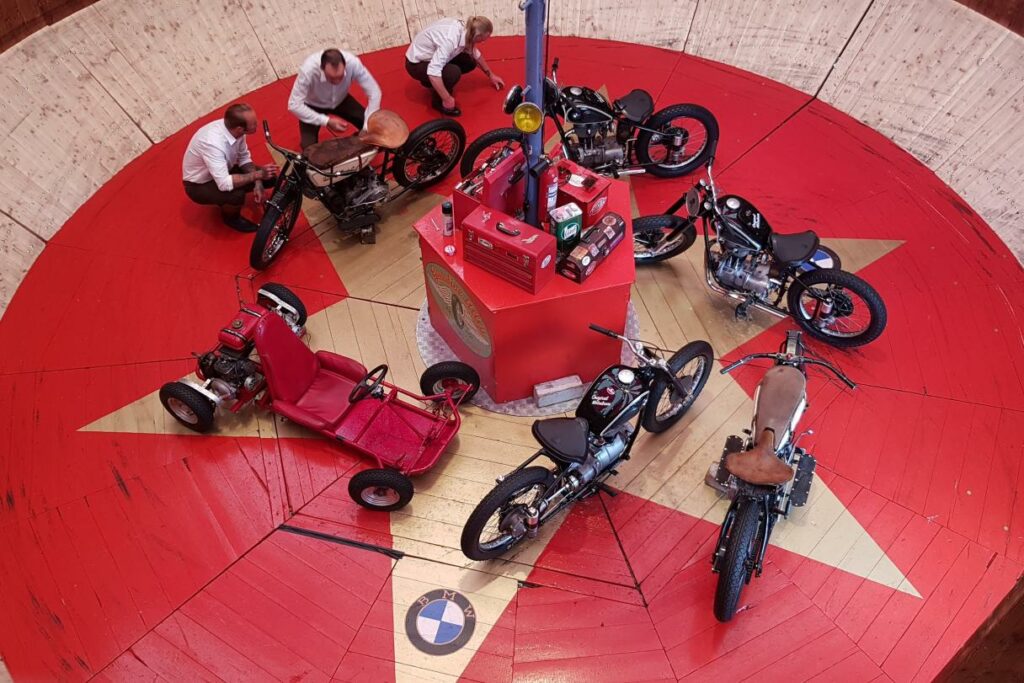
Hydrate
This is the toughest to follow but I would argue it is the most important. The typical festival-goer will consume around three liters of beer a day at Oktoberfest– that is a lot for the human body to process. Copious amounts of beer combined with cigarette smoke, sun exposure, Bratwursts, and yelling will very quickly wear your immune system down and make it harder to wake up in the morning.
Just a bit of hydration every hour goes a long way to counteracting the effects of the alcohol and, most importantly, prevent hangovers, allowing one to bounce back and rally for the coming days.
This is always easier said than done. Unfortunately, water is not free in Germany or Europe in general and fest is no exception. If you want to stay hydrated, it will be your responsibility to see it happen. Bottles are generally not too expensive and occasionally there are public water fountains to fill the bottles up, but don’t count on it. Take the hit and buy the occasional water between beers.
Your tomorrow self will thank you.